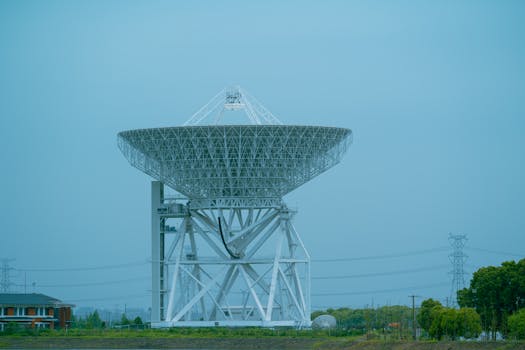The Future is Now: Exploring the Cutting-Edge Innovations in Satellite Telecommunications

Satellite Telecommunications is the focus keyword of this article, and it is an exciting time for the satellite telecommunications industry as it is on the cusp of a major revolution. With the introduction of cutting-edge innovations, the industry is poised to undergo a significant transformation. In this article, we will explore the latest advancements in satellite technology and their impact on the industry.
The use of satellite telecommunications has become increasingly important in recent years, with the demand for global connectivity on the rise. Satellites play a crucial role in providing internet access to remote and underserved areas, where traditional communication infrastructure is lacking. The development of new satellite technologies has enabled the provision of faster, more reliable, and more affordable internet services, making it possible for people around the world to stay connected.
One of the most significant innovations in satellite telecommunications is the development of low-Earth orbit (LEO) satellites. LEO satellites are a new generation of satellites that operate at an altitude of around 1,200 kilometers, which is much lower than traditional geostationary satellites. This lower altitude enables LEO satellites to provide faster and more reliable internet services, with lower latency and higher speeds. Companies such as SpaceX, Amazon, and OneWeb are investing heavily in the development of LEO satellite constellations, which are expected to revolutionize the satellite telecommunications industry.
Another area of innovation in satellite telecommunications is the development of advanced satellite antennas. Traditional satellite antennas are large and bulky, which can be a limitation for many applications. However, the development of new materials and technologies has enabled the creation of smaller, more compact satellite antennas that are capable of providing high-gain and high-throughput performance. These advanced antennas are being used in a variety of applications, including satellite communications, navigation, and remote sensing.
The use of artificial intelligence (AI) and machine learning (ML) is also becoming increasingly important in satellite telecommunications. AI and ML algorithms can be used to optimize satellite performance, predict and prevent errors, and improve the overall efficiency of satellite operations. For example, AI-powered systems can be used to analyze data from satellite sensors and predict potential issues before they occur, enabling prompt action to be taken to prevent downtime and minimize losses.
In addition to these technological advancements, there are also significant regulatory and policy developments that are shaping the future of satellite telecommunications. The Federal Communications Commission (FCC) has recently announced plans to open up new spectrum bands for satellite use, which is expected to enable the development of new satellite-based services and applications. Furthermore, the European Space Agency (ESA) has launched a number of initiatives aimed at promoting the development of satellite telecommunications in Europe, including the provision of funding and support for start-ups and small and medium-sized enterprises (SMEs).
In conclusion, the future of satellite telecommunications is looking bright, with a range of cutting-edge innovations and developments that are set to transform the industry. From the development of LEO satellites and advanced satellite antennas to the use of AI and ML and regulatory and policy developments, there are many exciting advancements on the horizon. As the demand for global connectivity continues to grow, the satellite telecommunications industry is poised to play an increasingly important role in providing fast, reliable, and affordable internet services to people around the world.
The potential applications of satellite telecommunications are vast and varied, ranging from providing internet access to remote and underserved areas to supporting critical infrastructure such as navigation, weather forecasting, and emergency response. With the continued development of new technologies and innovations, the satellite telecommunications industry is likely to experience significant growth and expansion in the coming years.
Moreover, the development of satellite telecommunications is not only limited to the technical aspects but also has significant economic and social implications. The provision of internet access to remote and underserved areas can have a major impact on local economies, enabling businesses to access new markets and customers, and providing people with access to education, healthcare, and other essential services.
However, the development of satellite telecommunications also raises important questions about the potential risks and challenges associated with the industry. For example, the increasing reliance on satellite technology raises concerns about the potential for cyber attacks and data breaches, as well as the impact of space debris on the environment. Additionally, the development of satellite telecommunications raises important questions about the regulation and governance of the industry, including issues related to spectrum allocation, licensing, and standards.
Despite these challenges, the future of satellite telecommunications looks promising, with many companies and organizations investing heavily in the development of new technologies and innovations. The use of satellite telecommunications is likely to continue to grow and expand in the coming years, driven by the increasing demand for global connectivity and the development of new applications and services.
As the satellite telecommunications industry continues to evolve and mature, it is likely to have a major impact on a wide range of industries and applications, from telecommunications and navigation to weather forecasting and emergency response. With the continued development of new technologies and innovations, the potential applications of satellite telecommunications are vast and varied, and the industry is likely to experience significant growth and expansion in the coming years.




